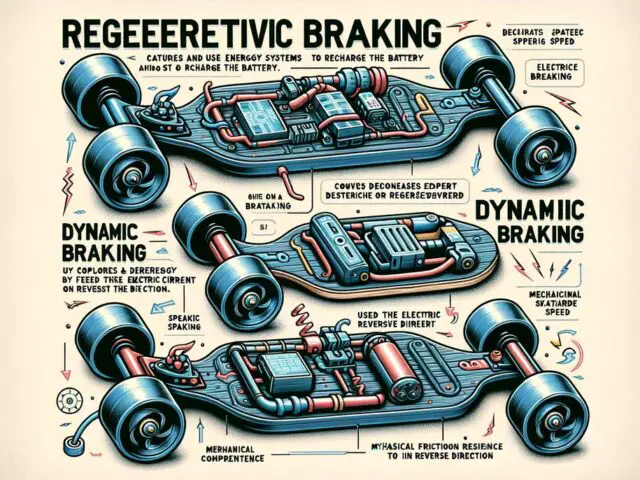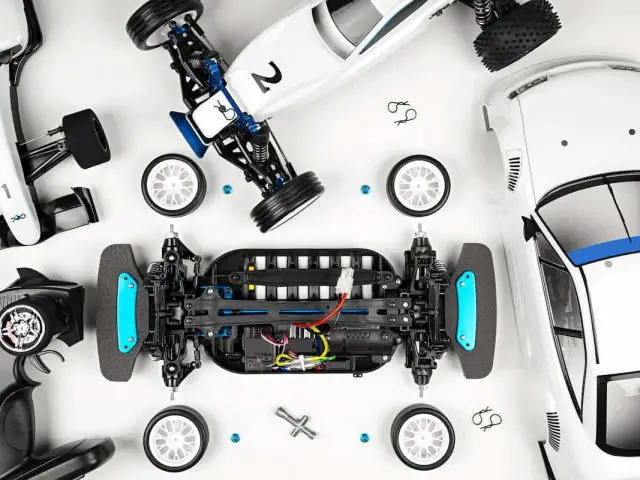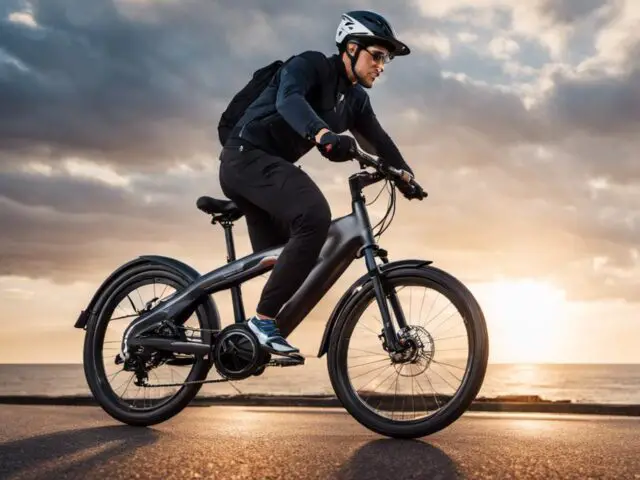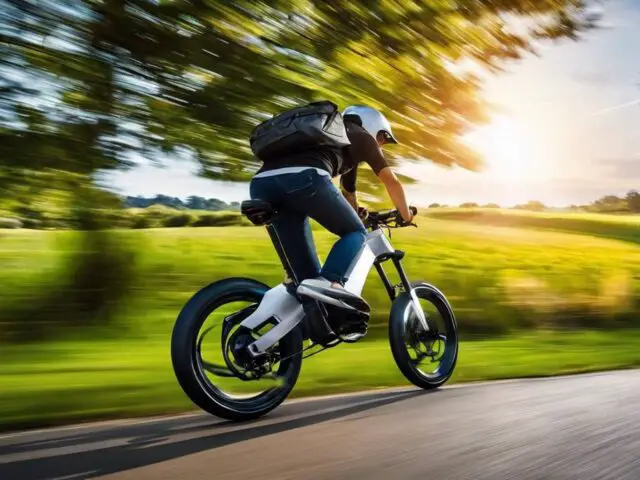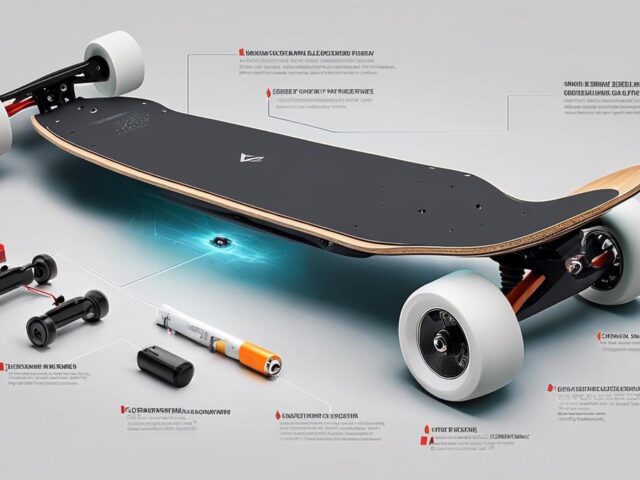As technology continues to advance, we are constantly finding new ways to make our lives easier and more efficient. One area that has seen significant progress is the world of electric bikes, or e-bikes. These eco-friendly modes of transportation have become increasingly popular in recent years, but one issue that many users face is the hassle of constantly having to plug in their bikes to charge. However, with the introduction of wireless charging technology for e-bikes, this inconvenience may soon be a thing of the past. Say goodbye to wires and hello to the future of e-bike charging.
Understanding Wireless Charging Technology
Wireless charging technology for e-bikes is a game-changer in the world of electric transportation. Unlike traditional charging methods that require plugging in your e-bike to an electrical outlet, wireless charging allows for a seamless and convenient charging experience. But how does it work?
Wireless charging is based on electromagnetic induction, which transfers energy from a power source to the battery of an e-bike without the need for physical connections. The technology consists of two main components: a charging pad and a receiver. The charging pad is connected to an electrical source, while the receiver is installed on the e-bike.
When the e-bike is placed on the charging pad, a magnetic field is created between the pad and the receiver. This magnetic field induces an electrical current in the receiver, which charges the e-bike’s battery. The process is efficient and reliable, ensuring that your e-bike is always ready to go whenever you need it.
One of the key benefits of wireless charging technology is its simplicity. You no longer have to worry about finding the right cable or struggling to plug it in. Just place your e-bike on the charging pad, and it will start charging automatically.
Additionally, wireless charging eliminates the risk of damage caused by cables or connectors. With no physical connection required, there is no chance of tripping over cables or damaging the charging port. This makes wireless charging a safer and more durable option for e-bike users.
Overall, wireless charging technology offers a convenient, efficient, and safe way to charge your e-bike. As the demand for e-bikes continues to grow, it is expected that wireless charging will become more widespread, providing an even better user experience. Say goodbye to the hassle of plugging in your e-bike and embrace the future of wireless charging.

Integration of Wireless Charging in E-Bikes
E-bikes have come a long way since their humble beginnings. What started as a niche mode of transportation for eco-conscious individuals has now evolved into a mainstream means of getting around. And now, with the introduction of wireless charging technology, e-bikes are set to become even more convenient and user-friendly.
The evolution of e-bikes has been driven by advancements in battery technology, motor efficiency, and overall design. As e-bike manufacturers continue to innovate, they have been striving to make these electric bicycles more accessible and practical for everyday use. And that’s where wireless charging comes into play.
Introducing wireless charging for e-bikes is a game-changer. Now you don’t have to worry about finding an electrical outlet or dealing with messy cables. With wireless charging, all you need is a charging pad, and you’re good to go. Simply place your e-bike on the pad, and it will start charging automatically. It’s that easy.
Wireless charging technology not only simplifies the charging process but also eliminates the risk of damage caused by cables or connectors. With no physical connection required, there’s no chance of tripping over cables or accidentally damaging the charging port. This makes wireless charging a safer and more durable option for e-bike users.
The introduction of wireless charging represents a significant milestone in the evolution of e-bikes. It further solidifies their position as a viable and sustainable mode of transportation for the future. As e-bikes continue to gain popularity and become more integrated into our daily lives, wireless charging will undoubtedly play a crucial role in making them even more accessible and convenient for users worldwide.
The future of e-bikes is bright, and wireless charging is paving the way for a new era of electric transportation.

Benefits and Limitations of Wireless Charging for E-Bikes
Wireless charging technology for e-bikes offers numerous advantages that make it a game-changer in the world of electric transportation. One of the most significant benefits is the convenience it provides. With wireless charging, you no longer have to deal with the hassle of finding an electrical outlet or untangling messy cables. Simply place your e-bike on the charging pad, and it will start charging automatically. This simplicity and ease of use make wireless charging a highly desirable option for e-bike users.
Another advantage of wireless charging is its durability and safety. With no physical connections required, there is no risk of tripping over cables or damaging the charging port. This not only reduces the chance of accidents but also increases the lifespan of your e-bike. Additionally, wireless charging eliminates the wear and tear that can occur from constant plugging and unplugging of cables, ensuring that your e-bike remains in optimal condition.
Wireless charging also offers flexibility and freedom. You can charge your e-bike without the constraints of cords or the need to be near an electrical outlet. This means you can easily charge your e-bike at home, at work, or even on the go. The ability to charge wirelessly gives you the freedom to travel without worrying about running out of battery power.
However, like any technology, wireless charging does have its limitations. One disadvantage is that it can be slower than traditional charging methods. The charging speed may vary depending on the specific wireless charging system and the power output it provides. Additionally, wireless charging pads and receivers can be more expensive than traditional charging cables. However, as the technology continues to advance and become more widespread, the costs are expected to decrease.
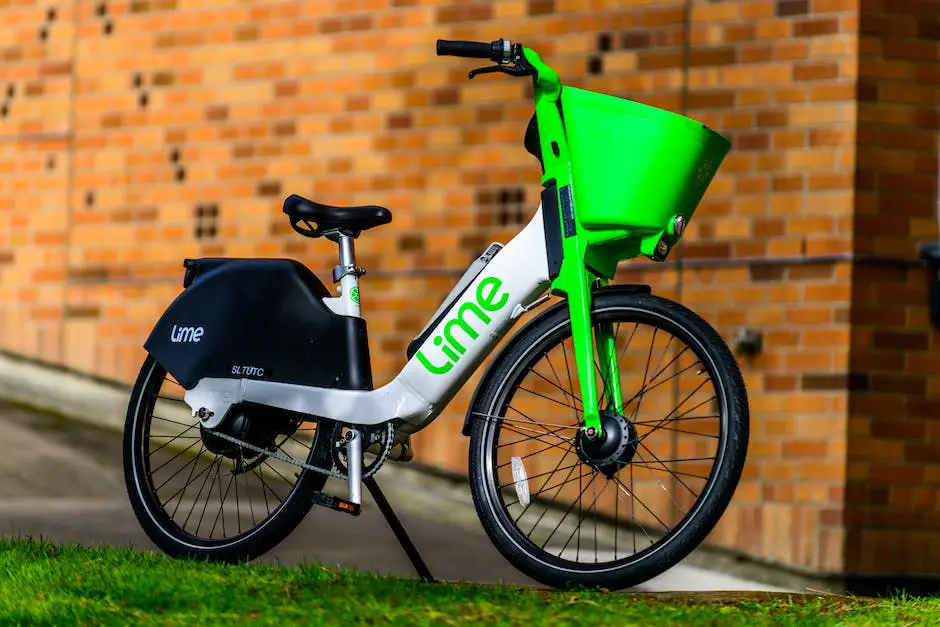
Efficiency and Speed of Wireless Charging for E-bikes
Efficiency and speed are two key factors when it comes to charging any electronic device, and wireless charging for e-bikes is no exception. Fortunately, wireless charging technology has made significant advancements in these areas, making it a highly efficient and speedy option for e-bike users.
One of the primary advantages of wireless charging for e-bikes is its efficiency. Unlike traditional charging methods that may result in energy loss due to resistance or inefficient charging systems, wireless charging offers a more direct and efficient transfer of power. The electromagnetic induction process used in wireless charging ensures that the energy from the charging pad is transferred directly to the e-bike’s battery without any significant loss. This means that more of the energy being supplied is actually going towards charging the battery, resulting in a faster and more efficient charging experience.
In terms of speed, wireless charging for e-bikes has also seen significant improvements. Early wireless charging systems may have had slower charging speeds compared to traditional methods. However, with advancements in technology, wireless charging pads now offer faster charging capabilities. Many wireless charging systems for e-bikes have charging speeds comparable to or even faster than traditional cable charging methods. This means that you can quickly and efficiently charge your e-bike without any sacrifices in terms of speed.
Overall, the efficiency and speed of wireless charging for e-bikes make it an attractive option for users. With the advancements in technology, wireless charging has become a highly efficient and speedy method of keeping your e-bike powered up and ready to go.
Is Wireless Charging Safe for E-Bikes?
When it comes to wireless charging for e-bikes, one common concern is safety. After all, we want to ensure that our valuable e-bikes are not only charged efficiently but also protected from any potential risks. So, is wireless charging safe for e-bikes?
The answer is a resounding yes. Wireless charging technology for e-bikes has been designed with safety in mind. The electromagnetic induction process used in wireless charging is a proven and reliable method that poses no harm to the e-bike or its battery.
Unlike traditional charging methods that require physical connections and can lead to wear and tear on charging ports, wireless charging eliminates these risks. There are no cables or connectors that can get damaged or pose a hazard. Additionally, wireless charging pads are designed with safety features to prevent overheating or overcharging of the e-bike’s battery, further ensuring the safety of the charging process.
Furthermore, wireless charging technology undergoes rigorous testing and certification to meet safety standards. Manufacturers of wireless charging systems adhere to strict guidelines to guarantee that their products are safe for use.
Ultimately, wireless charging for e-bikes provides a safe and reliable method of charging. By eliminating the need for physical connections and incorporating safety features, users can charge their e-bikes with peace of mind, knowing that their valuable assets are being charged safely and efficiently.
Future of Wireless Charging in E-Bikes
As we look to the future of electric bikes, it’s clear that wireless charging technology will play a significant role. The convenience, efficiency, and safety offered by wireless charging have already made it a game-changer in the world of e-bikes, but the best is yet to come.
One exciting prospect for the future of wireless charging is the development of more advanced charging pads. Imagine a charging pad that can be installed on the road, at traffic lights, or in parking lots, allowing e-bikes to charge while they wait. This could revolutionize the way we think about e-bike charging and eliminate the need for dedicated charging stations.
Additionally, we can expect to see advancements in charging speed. As technology continues to improve, wireless charging systems will become even faster and more efficient. This means that e-bike users will be able to charge their bikes in a matter of minutes, rather than hours, allowing for more frequent and convenient charging options.
Furthermore, as wireless charging becomes more widespread, we can anticipate a decrease in costs. Currently, the price of wireless charging pads and receivers may be higher than traditional charging cables, but as demand increases and production scales up, the prices are expected to become more affordable for consumers.
However, it’s also important to address one of the biggest challenges with wireless charging technology: Energy waste. Current technology often falls short in terms of efficiency when compared to traditional cord charging. On the bright side, with advancements being made in resonant inductive coupling technology, we could soon see major improvements in this area, turning a present-day weakness into future strength.
One particular area where e-bikes could experience a significant revolution is in the design realm. Without the need for charging ports, designers will have the chance to redefine what an e-bike looks like, expanding their creative boundaries and presenting riders with more diverse, aesthetically appealing and ergonomic options. This could create a more personalized e-bike experience and deeply impact the hobbyist community.
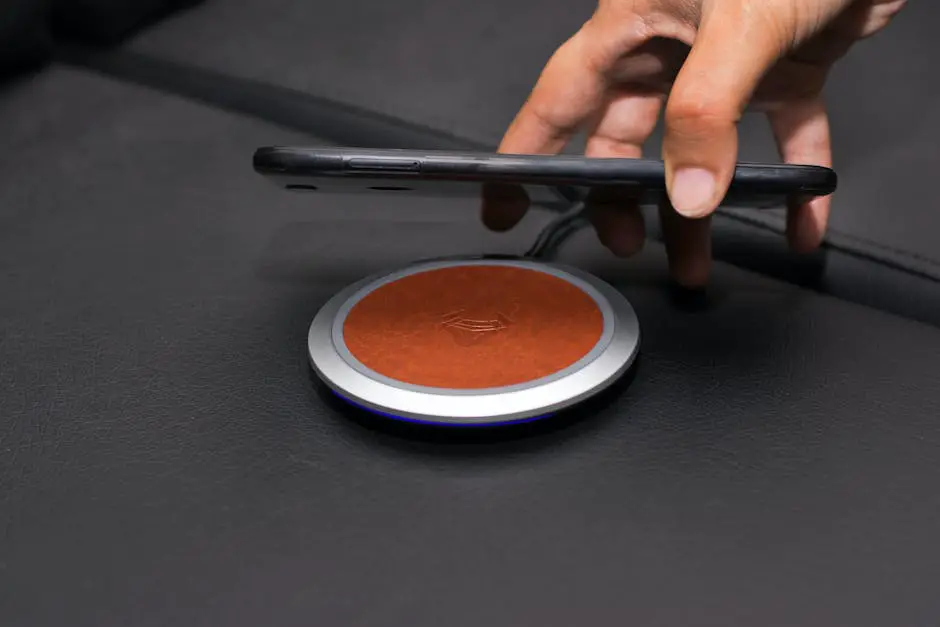
The TILER Integrated Kickstand Wireless Charger
The TILER e-bike charging system is a wireless charging system that uses inductive charging to charge e-bikes. The system consists of two components: a charging tile that is installed in the ground and a charging kickstand that is attached to the e-bike.
When the e-bike is parked on the charging tile, the charging kickstand automatically aligns with the charging coils in the tile. The charging coils then transfer energy to the e-bike’s battery wirelessly.
The TILER e-bike charging system has a number of advantages over traditional wired charging systems. First, it is more convenient. Users simply park their e-bike on the charging tile and it will start charging automatically. There is no need to plug in a charger or worry about tripping over wires.
Second, the TILER e-bike charging system is safer. There is no risk of electric shock or fire. Additionally, the system is weatherproof, so it can be used in all types of weather conditions.
Third, the TILER e-bike charging system is more efficient. It can charge an e-bike battery up to twice as fast as a traditional wired charger.
The TILER e-bike charging system is still under development, but it has the potential to revolutionize the way e-bikes are charged.
Here are some of the benefits of using the TILER e-bike charging system:
- Convenience: Simply park your e-bike on the charging tile and it will start charging automatically.
- Safety: No risk of electric shock or fire. The system is also weatherproof.
- Efficiency: Can charge an e-bike battery up to twice as fast as a traditional wired charger.
The TILER e-bike charging system is a promising new technology that has the potential to make e-bikes even more convenient and efficient to use.
Helpful Links
For all your RC Questions, Click HERE
If you are interested in RC cars and trucks, RC World has you covered.
For RC boats and watercraft, check these articles out.
For all your RC Airborne endeavors, we have everything you need.
What is a LiDAR Drone? Mapping a New World
In recent years, drones have become increasingly popular for various applications, from aerial photography to package delivery. However, there is one type of drone that is quickly gaining…
Essential Guide to Electric Skateboard Brakes
Electric skateboards are revolutionizing the way we move, adding a futuristic edge to the timeless thrill of skating. At the core of this evolution is the development of…
Guide to Gas, Electric, or Nitro for Best RC Performance
Being around RC cars almost all my life, I had developed a special inclination towards their working mechanics trying to make sure I stay up to date. RC…
Health Benefits of E-bikes: Improve Your Physical and Mental Well-being
Are you looking for a fun and efficient way to stay active and improve your overall health? Look no further than the world of e-bikes. These electric-powered bicycles…
Electrify Your Fishing Game with E-bikes
Fishing and biking – two passions that, when combined, create an extraordinary duo in the great outdoors. As an introduction, let’s dive deep into the remarkable world of…
Thrifty Thrills: Making Electric Skateboarding Affordable
Electric skateboarding is a thrilling hobby that’s gaining popularity, but the cost of brand-new boards can be a major roadblock for many enthusiasts. If the steep price tags…
The Exciting Rise of Eco-Friendly E-Bikes: A Glimpse at Sustainable Transport’s Future
As global climate change persists, people from all walks of life are seeking more sustainable ways to travel. One solution gaining traction is the eco-friendly E-bike. These technologically…
10 Majestic E-Bike Trails for Breathtaking Scenic Rides
In the realm where human innovation meets the splendor of Mother Nature, a stunning synthesis emerges in the form of e-biking trails. E-bikes offer an ideal way to…
Mastering Electric Skateboards: User Tips
For the thrill-seeker in all of us, there’s something quite exhilarating about cruising the streets on an electric skateboard. Whether you’re an experienced rider or a novice, understanding…


